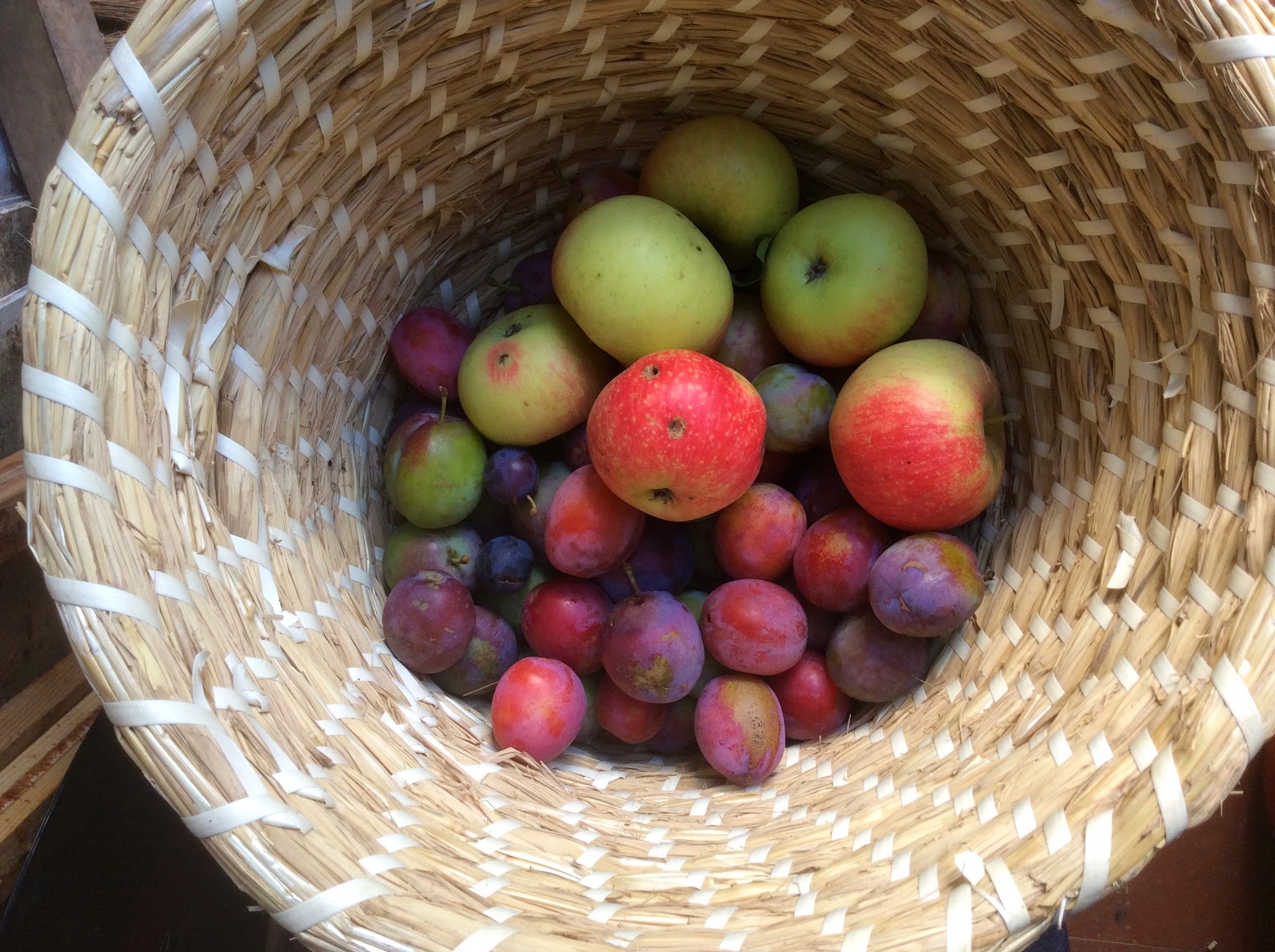There is a colossal patch of brambles in the paddock where I have some hives, and I'm fortunate to have three rather ancient apple tree espaliers in the garden. Another garden where I work and look after bees has plum, damson and apple trees, so as a result of the pollination services, there is usually an excellent fruit crop which in my book means one thing: JAM.
I have already made about fifteen jars of bramble and apple jelly, which I confess I find easier than jam. Simply wash and cut up the apples; core, skin, pips and all. Wash the blackberries and add enough water to stop them catching. Cook until thoroughly soft and pulpy, although if you're using eating apples you may have to help this along once they're soft by giving them a good squidge with a potato masher. Strain the resulting gloop through a jelly bag for about 12 hours in to a jug or bowl, or until every last scrap of juice has filtered out, but don't be tempted to squeeze the bag or you'll end up with cloudy jelly. Even though you may not be entering your preserve for the local show, the clear, jewel-like quality of bramble jelly is one of its charms.
Measure out your liquid and for every 10 parts of juice, you'll need 7 parts of sugar, so 1 litre of liquid will require 700g of regular granulated white sugar. Warm the liquid in a large heavy-based saucepan, or preserving pan if you have much more than 1.5 litres of juice. Add the sugar and stir slowly until dissolved and pop your sugar thermometer in now if you use one and a small plate into the freezer if you don't. Also put your jars in the oven to sterilise. Then crank up the heat and bring to a rolling boil - this, if you're anything like me, is where you discover you should have used a preserving pan as the vat of scalding bubbling magenta comes dangerously close to spilling over your stove...
Once it reaches near setting point, which should be after about 10 minutes at a full terrifying boil without stirring, test the jelly. If you've a jam thermometer it will be at the temperature for jam (!) but I adopt a belt, braces and additional belt policy and have a thermometer, and a plate, and use the flake test too. To carry out the plate test, drop a few blobs of liquid on to the plate and wait a minute or two for it to cool (hence putting it in the freezer) and then give it a prod with your finger see if it has jellified. The flake test is where you pick up a spoonful of liquid on your wooden spoon and again, wait for a minute. If, when you turn the spoon over to deposit the liquid back in to the pan, it sort of flops off in a big blob, then you've reached setting point. Remove the pan from the heat and using a ladle and funnel, pour in to your hot jars and screw the lids on quick (remember the jars are hot!) so that they form a good seal.
Jam is made by preparing your fruit, so peeling, coring, chopping, de-stoning as necessary, then weigh it before placing in a preserving pan. Add a small amount of water to prevent it catching, then heat gently and simmer until the fruit is soft. Then add an equal quantity of sugar to fruit and bring to the boil and continue as for jelly until setting point is reached where you can once again deploy the cold plate technique. Once it's ready, jar up as above.
 |
| Softening apples, damsons, plums, blackberries and elderberries for Autumn Jam |
A note about pectin: this substance naturally occurs in plant cells walls, and reacts when heated with the fruit and sugar to form a gelling agent which binds the jam or jelly together. Some fruits contain a lot of pectin, others less so. All the fruits I preserve happen to be high in pectin so I don't use additional pectin, lemon juice or specific jam sugar, and I quite like the natural soft set of home made jams and jellies anyway. However, do check before embarking on your own recipe as it will not set if there's insufficient pectin and you'll end up with fruit glue. I've been there.

